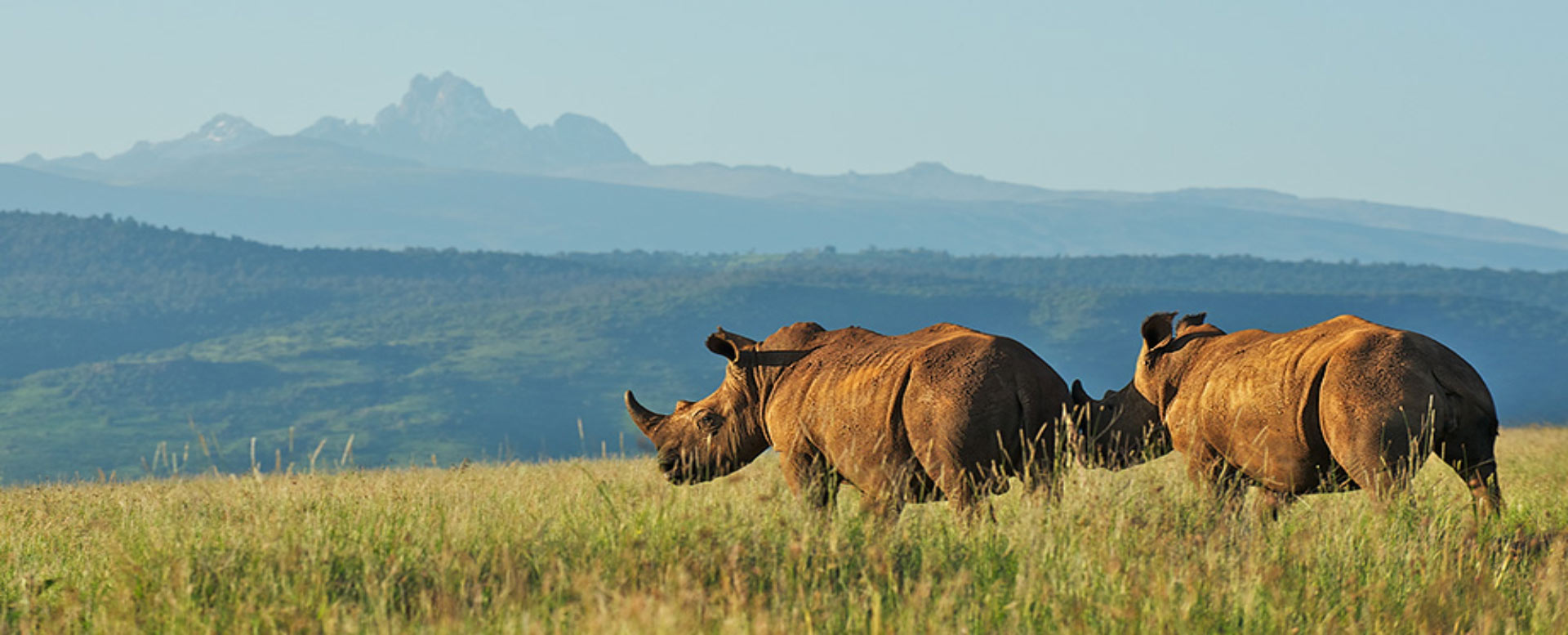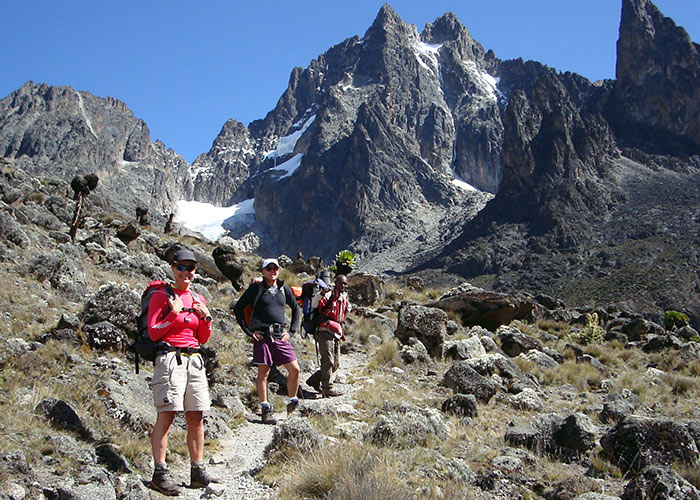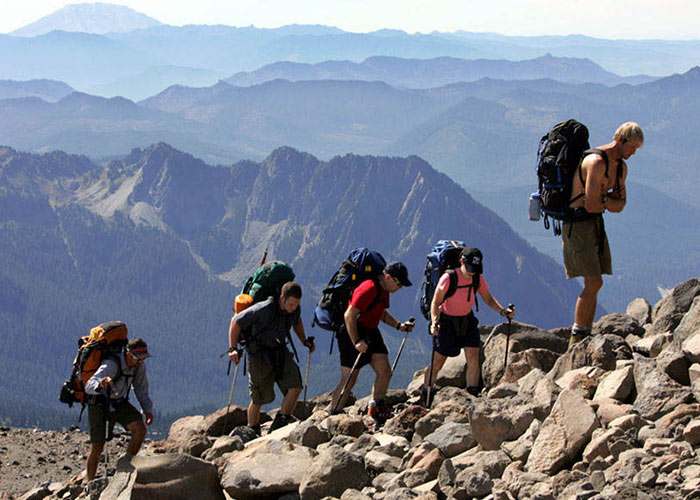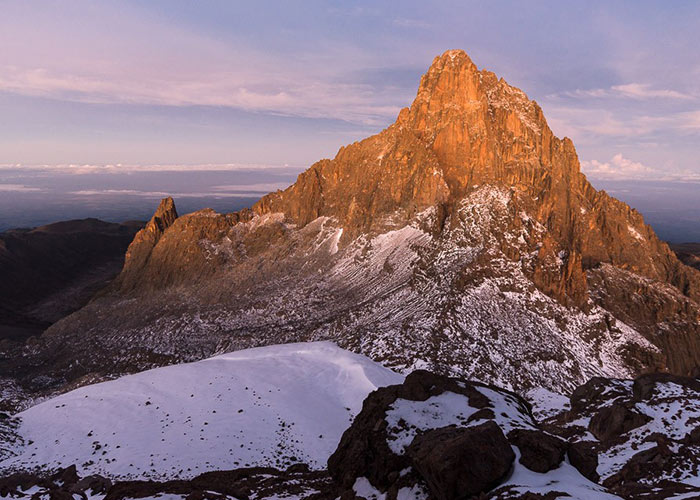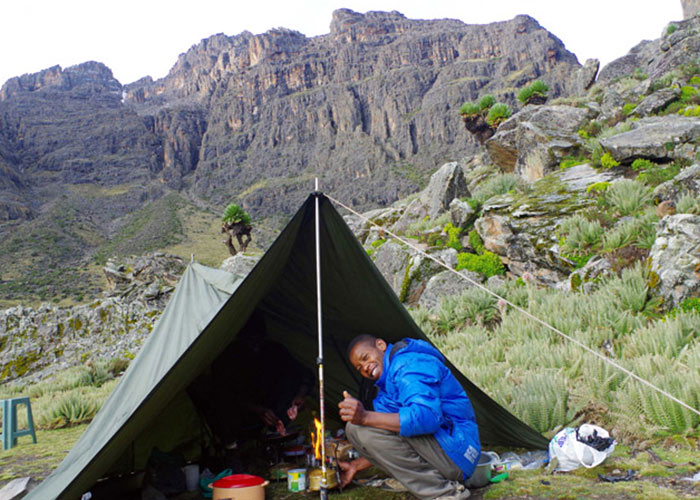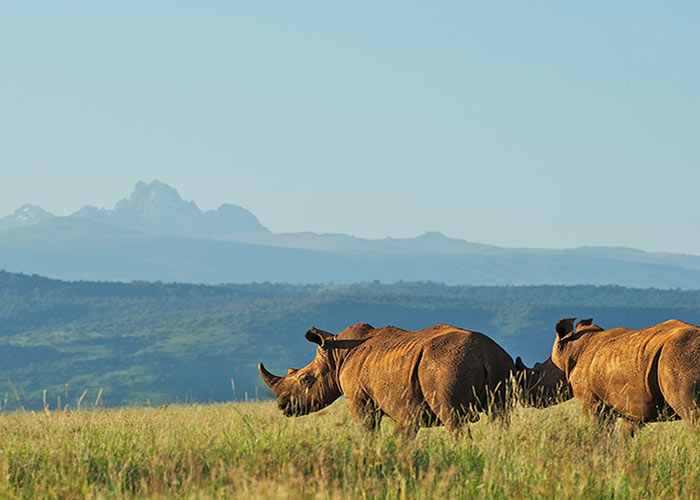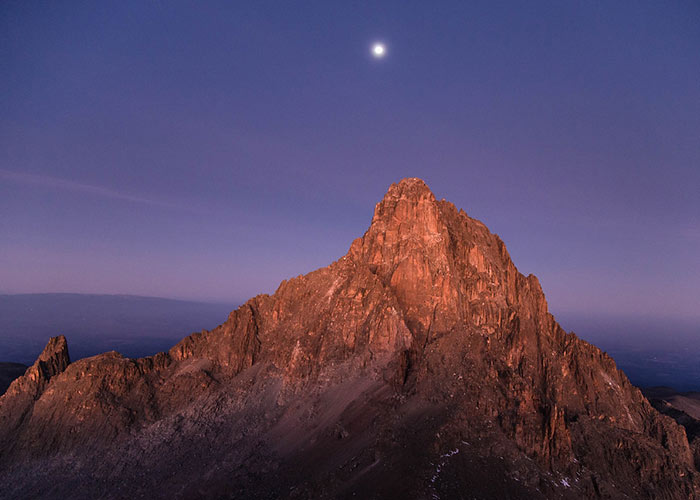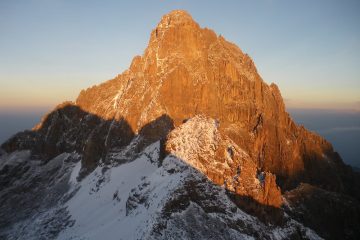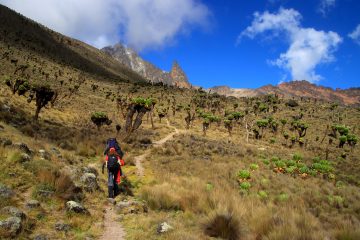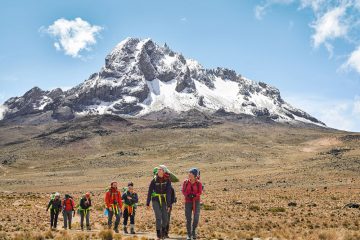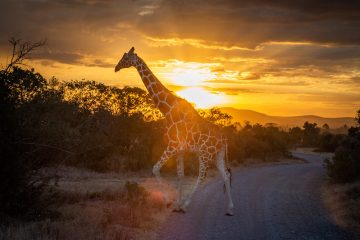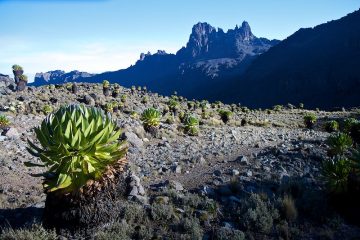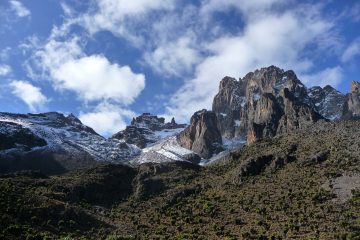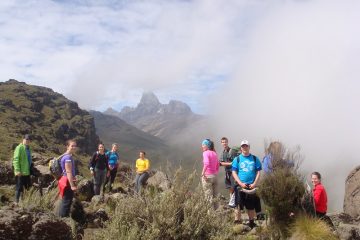Mount Kenya National Park is located in central Kenya and is dominated by Mount Kenya (5,199m), Africa’s second-tallest peak after Mount Kilimanjaro. Mount Kenya National Park is home to a rare afro-alpine ecology and acts as a vital drainage basin for Kenya’s water supply.
The Kenyan government built a national park around Mount Kenya in 1978 in order to encourage tourism and preserve the country’s biodiversity. In 1997, both the park and the forest reserve were designated as UNESCO World Heritage Sites.
Mount Kenya National Park spans 715 km2 and has a variety of environments, including alpine rivers, woodlands, and mountain slopes.
Mount Kenya National Park Location & Adventures
Mount Kenya National Park is 175 kilometers northeast of Nairobi, and most itineraries begin there.
A Mount Kenya trip is a 4–5-day solitary excursion for trekking lovers, and it provides some of Kenya’s most magnificent landscapes.
Alternatively, as part of a larger Kenyan trip, you might visit Mount Kenya’s slopes for a single day. As part of a 1–2-week tour, some visitors combine the park with Lake Nakuru National Park and the Maasai Mara.
Wildlife at Mount Kenya National Park
The alpine woods of Mount Kenya National Park are home to a diverse range of animals. The woodlands are home to huge creatures including elephants, Cape buffaloes, and leopards, as well as lesser mammals like antelope. The woodlands are also home to black-and-white colobus monkeys.
The Mount Kenya hyrax, a tiny herbivorous mammal, and the common duiker, a small antelope, are two creatures that have adapted to exist at high altitudes on Mount Kenya.
Sunbirds, starlings, and bearded vultures are among the park’s approximately 130 bird species.
Getting to Mount Kenya National Park
Mount Kenya National Park is 175 kilometers from Nairobi by road, on one of the three main routes to the summit.
Alternatively, you may fly from Nairobi’s Wilson Airport to Nanyuki Airfield, close outside Mount Kenya National Park, on the Airkenya Express.
The aircraft takes 35 minutes and cuts the traveling time in half, although most travelers choose to hire a vehicle. We will take care of your transportation if you book with us.
Trekking at Mount Kenya National Park
Mount Kenya has three summits of differing degrees of difficulty, although most explorers choose to climb the smaller peak, Point Lenana (4,985m), because it is the easiest to reach. Batian (5,199m) and Nelion (4,599m) are only accessible to expert climbers with sophisticated climbing equipment (5,188m).
The Naro Moru path is the most popular hiking route to Point Lenana, and it takes three days to complete. The trail starts at Naro Moru, on Mount Kenya’s western flank, and continues to Mackinder’s Camp before joining with the Peak Circuit Path, a difficult 10-kilometer hike past Batian and Nelion.
To allow for acclimatization, the Kenya Wildlife Service recommended that you spend at least three nights on the mountain.
The dry seasons, from June to October and January to March, are the finest times to climb Mount Kenya.
Because the routes might get slippery during the rainy seasons, you should avoid them at this time of the year.
ABOUT MOUNT KENYA
Mount Kenya is the highest point in Kenya and the second-highest in Africa, standing at 5199 meters. Mount Kenya has three summits: Batian, Nelion, and Point Lenana. Despite being a stratovolcano, the peak’s rough appearance is due to its prior ice cover. On the top now, there are 11 tiny glaciers.
Mt Kenya National Park encompasses the region surrounding the peak, which is recognized for its diverse vegetation and animals. As you climb higher in height, the vegetation changes from lowland savannah to bamboo forests. The unusual high-altitude equatorial habitat may be found here. With unusual vegetation and hazy ground, the area seemed to belong to another world.
Travelling to Mount Kenya from Nairobi takes around four hours to the towns of Naro Moru or Embu, where we may accommodate you in a local hotel or at our Guest House. The Sirimon, Burguret, and Naro Moru routes all begin in Naro Moru, whereas the Chogoria route begins at Embu. All of our listed pricing are based on camping on the mountain, although there are a few huts that you may upgrade to, most of which are privately owned.
Mount Kenya, seen from afar, serves as a key water source for the whole country, while the surrounding terrain serves as Kenya’s breadbasket.
ROUTES FOR TREKKING ON MOUNT KENYA
The twin topped peaks of Batian and Nelion, which are challenging climbing routes, may be seen from the Sirimon Route.
Read more about Mount Kenya Routes
MOUNT KENYA NARO MORU ROUTE
This journey ascends the Noro Moru Route from the west, and it is the most popular of all the mountain routes. It contains the infamous ‘Vertical Bog,’ which ascends for an hour or two above Met Camp and leads to Mackinders Camp through the Teleki Valley.
Following that, an acclimatization day is followed by an early start to the summit, first along simple trails to the top of the valley, and then up a steep zigzag route on loose terrain to reach the base of the Lewis Glacier, which has receded substantially over the previous two decades.
Aside from the breathtaking scenery, this trip also includes a Via Ferrata. Feel the freedom of scrambling the side of the summit ridge from the Austrian Hut, knowing that the fixed lines will keep you safe. For those searching for a genuine adrenaline rush, exposure of craggy peaks is a must.
The landscape along the Noro Moru Route is spectacular. The two tallest peaks are Batain and Nelion, with Point John to the right and Point Lenana, a lesser mountain to the right and somewhat set back.
Read more about the Naro Moru Route
MOUNT KENYA CHOGORIA ROUTE
The Chogoria Route of Mt Kenya, like the Noro Moru Route, does not require any technical climbing expertise. This is, without a doubt, the most gorgeous of the trekking routes, as well as the most demanding. This route begins and finishes in Embu, and it requires 4×4 transportation to get there. It’s also a hiking trail that leads to the peak of Point Lenana through the Gorges Valley and the Lewis Glacier.
Although there isn’t the same infrastructure as the Naro Moru and Sirimon routes, there are lakes and tarns to explore along this route. Any ascent on the Chogoria side will be a camping trip.
Beautiful vistas along the Chogoria Route, with enormous lobelia in the foreground, are one of the many rare florae found on this mountain.
Read more about the Chogoria Route
MOUNT KENYA SIRIMON ROUTE
Another walking path to Point Lenana is Sirimon; this is the simplest of the three hiking ways to Point Lenana. The journey takes five days and begins at Naro Moru. The varied views and fun trekking make this a great choice when combined with a descent down the opposite side on the Chogoria route.
Read more about the Sirimon Route
COMBINATION ROUTES, TRAVERSES, & SUMMIT CIRCUITS
For trekking to Point Lenana, we have numerous distinct combination paths that allow you to hike up one way and down another. Almost all of the routes involve camping, however, some include mountain cabins where you may upgrade. Our Mount Kenya Traverse, which takes 5 or 6 days to complete and includes stunning scenery, airy and demanding walking, and superb acclimatization, ascends the Naro Moru and descends through the Chogoria path. The Peak Circuit is a seven-day hike that explores the mountain’s nooks and crannies, circling the summit massif and sleeping high throughout. It features a search for “Icy Mike,” a misplaced elephant!!
MOUNT KENYA BATIAN PEAK TECHNICAL CLIMBS
If you are an experienced trad climber, the challenge of Batian Peak, Mount Kenya’s actual peak, will appeal to you (5,199m). This 21-pitch climb requires previous technical rock climbing expertise. All 21 pitches are completed in one day, making this Mt Kenya summit climb not only magnificent but also hard. This summit is best reached between June and August.
MOUNT KENYA NELION PEAK TECHNICAL CLIMBS
Mt Kenya’s second-highest peak necessitates 18 pitches of traditional rock climbing. Prior to ascending this difficult peak, you’ll need a lot of technical rock climbing expertise, just like its neighbor.
If the weather and snow pack allow, a well-experienced fit climber can climb both Nelion and Batian Peak in the same day, however, this requires crossing between the two. There is a modest bivi hut directly on the top of Nelion that can accommodate two persons if they become weathered or run out of time. The months of September through March are ideal for climbing Nelion.
THE BEST TIME TO TREK MOUNT KENYA
Mount Kenya is best ascended from any of the hiking routes between January and March and June and October, but it may be climbed all year. The wet months are generally April, May, and November.
In recent years, however, with the start of climate change, they have become more difficult to anticipate.
Read about the best time to climb Mount Kenya.
THE LEVEL OF FITNESS REQUIRED TO CLIMB MOUNT KENYA
You do not need to be an ultra-fit mountaineer to complete the trekking routes up to Point Lenana. You should, however, have some previous trekking expertise in mountainous terrain and be in decent general shape. You must be in great climbing fitness to climb Nelion or Batian Peak. Climbing multi-pitch requires a lot of stamina and strength. Not just in your capacity to climb, but also in your ability to walk. The tough climbing routes also require you to top Point Lenana, so be prepared to travel as well as climb several pitches.
Tranquil Kilimanjaro encourages adequate acclimatization regardless of whatever path you choose.
We include extra days and treks in our itineraries to guarantee that you are appropriately acclimatized and do not rise too rapidly.
MOUNT KENYA’S CULTURAL IMPORTANCE
Mount Kenya is revered by Kenyans for its cultural significance. Local tribes have used this mountain as a gathering spot, and it is revered as a god’s throne. Kenya’s name comes from this mountain, which occupies a particular place in the hearts of all Kenyans.
EQUIPMENT AND KIT TO CLIMB MOUNT KENYA.
Aside from personal items, proper layering and clothes are essential for climbing Mount Kenya. It’s crucial to have a few moisture-wicking, non-cotton layers on hand.
For higher heights, you’ll also need an insulating layer like a puffy jacket, hat, and gloves. Rain and snowfall on Mount Kenya, so bring a waterproof layer and gaiters to keep the wind and rain at bay.
You must carry your own trad racks, ropes, harness, helmet, cams, and anchoring systems if you are climbing Nelion or Batian peaks.
See our Mount Kenya trekking kit list for a more thorough list of equipment.
Do you want to learn more? We’re here to assist you. Please do not hesitate to contact us if you have any queries about your Mount Kenya vacation.

